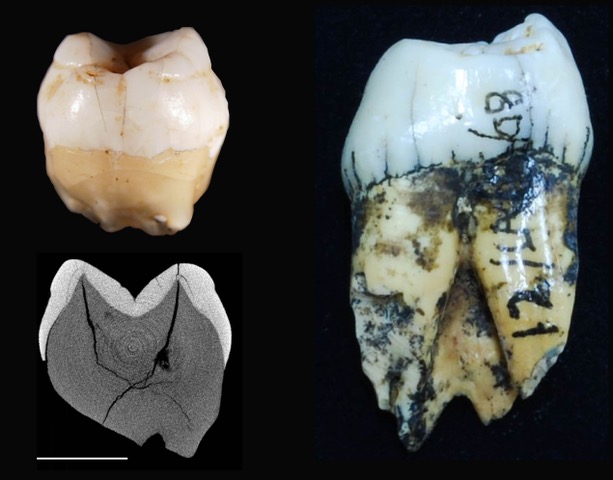Hunting was not easy in a rainforest in ancient times but new research has found modern humans made a way for themselves in Indonesia.
New evidence not only suggests that modern humans were present in Southeast Asia 20,000 years earlier than previously thought – but they were colonising dense rainforests at earlier ages as well.
The research, presented in the prestigious journal Nature, involves three members of the Australian Research Centre for Human Evolution (ARCHE) at Griffith University, drawing in their different scientific expertise to solve complex evolutionary discoveries.
ARCHE has experts in dating, ancient rainforest ecology, and dental anatomy – among other topics — making it a unique collaborative team.
Because the findings suggest humans were in Southeast Asia between 73-63 thousands years ago, it means they could have potentially made the crossing to the Australian continent even earlier than 50,000 years ago.
This is consistent with a recent Nature paper that also featured a Griffith author, Dr Jillian Huntley, that has documented cultural artefacts 65,000 years ago in a rock shelter in Northern Australia.
Researchers, led by Macquarie University’s Dr Kira Westaway, used a combination of methods to date a cave site in western Sumatra called Lida Ajer that contains fossils of rainforest fauna associated with two human teeth. Until now, the significance and validity of the remains had not been widely accepted.
Some of the best dating facilities in the world were used in the study, including the same pieces of equipment that had earlier dated the famous ‘Hobbit’ fossils of Southeast Asia, also found a couple of islands away. There is also temporal overlap of modern humans and these more ancient species of hominins in Indonesia.
The cave was originally excavated by Eugene Dubois, a Dutch palaeoanthropologist of ‘Java Man’ fame, in the late 1880s and revisited one hundred years later by Jon de Vos and Randy Skelton.
The modern human presence in Sumatra between 73-63 thousands years ago occurred when the region was dominated by a closed canopy rainforest ecosystem similar to that found there today.
“Successful exploitation of rainforest environments is difficult, and requires the capacity for complex planning and technological innovations to secure adequate resources,” Dr Julien Louys of ARCHE said.
“Our study indicates that such innovations and capacities were in place in Asia by at least 60 thousand years ago.
“Living in a rainforest was not thought to be possible until only the last few thousand years because sourcing enough carbohydrates and proteins in dense canopy forests requires sophisticated hunting technology and knowledge that the first humans out of Africa would not have possessed.”
Associate Professor Tanya Smith performed micro CT scans on the teeth to distinguish them from orangutans.
“When you look at the inside of the teeth, the characteristics of the enamel are quite different, and we couldn’t be sure whether the molar was from an orangutan or a human from the outside” she said.
Associate Professor Maxime Aubert, who is also a member of the Griffith Centre for Social and Cultural Research (GCSCR) and recently dated the ‘Hobbit’ fossils remains as well as some of the world’s earliest cave art in Sulawesi, used the same technique to date faunal teeth that were found in association with the human teeth.
“Now that we have established that modern humans were present in Southeast Asia 20,000 years earlier than previously thought, an interesting question is whether these early human coloniser exhibited manifestations of complex symbolic behavior such as cave paintings”, Associate Professor said.
Dr Louys will continue studying Sumatra fossils as part of his Australian Future Fellowship, looking for new sites over the next four years and trying to find lost old sites.
Background:
The Australian Research Centre for Human Evolution, which sits within based in Griffith’s Environmental Futures Research Institute, is the first academic centre specifically focused on gaining a deeper understanding of the scale of ancient human migrations and the full story of the origins of the people in our region. An initiative of Queensland’s Griffith University, ARCHE’s mission is to foster research excellence through multidisciplinary projects that bring together leading Australian and international scholars and institutions in the field of human evolution, with a particular focus on two key regions: Australia and neighbouring Southeast Asia.
